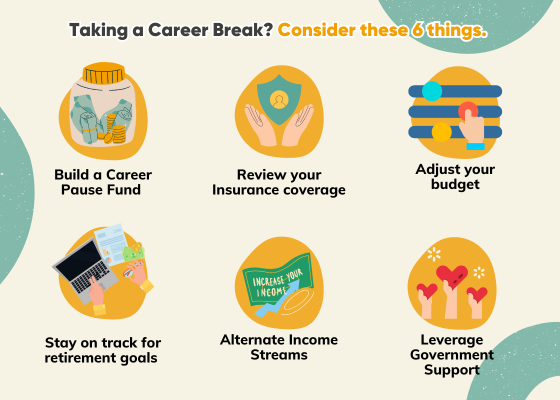Note: It was announced in November 2023 that MoneyOwl will be acquired by Temasek Trust to serve communities under a re-purposed model, and will move away from direct sale of financial products. The article is retained with original information relevant as at the date of the article only, and any mention of products or promotions is retained for reference purposes only.
______________
In this article, we will focus on the cost of tertiary education in Singapore and the available financial instrument to help save for your child’s tertiary education.
There are generally 2 ways that this cost can be funded, either parent-sponsored or self-sponsored.

Depending on your belief and values system, funding your child’s tertiary education is commonly considered as a gift of love to them before they enter adulthood. Some may want their children to learn independence and self-fund their own education. There is no right or wrong. Regardless of how you want to approach this matter, the fact is that the cost of education is always going to rise and it is important to be aware of it. In the following sections, we explore the reality of rising costs and ways you can plan to fund your child’s education.
Cost of Education
The cost of university education is made up of two components – tuition fees and living expenses.
- Tuition fees would be dependent on the choice and duration of the course and whether your child will be studying locally or overseas.
- Living expenses would typically include accommodation (if staying on campus), food, transport, and materials. This is highly subjective and largely depends on one’s affordability.
Understandably, if your child is still young, it could be too early to decide what course or university he/she will be attending. Hence, for the purpose of this article let’s look at how much it would cost for a local university education (non-medicine) over a 4-year period.
| Category | Tuition Fees | Living Expenses | Total |
| Annual Expense – Current Cost | $9,000 | $6,000 | $15,000 |
| Expense Across 4 Years | $36,000 | $24,000 | $60,000 |
*Assumption: The tuition fees used are the average tuition fee of non-medicine courses in NUS, NTU, and SMU in 2018. The living expenses are based on a $500/month allowance to cater for food and transport.
According to research on tuition fees in NUS, NTU, and SMU, the cost of education has been rising at approximately 4% over the last 20 years. Over the same period, the cost of living has been rising at approximately 2% per year (Singstat, 2019).
Using the inflation rates above, the total cost of education over the next 20 years would be:

Wow! Isn’t it scary? The cost of putting your child through university is projected to almost double in 20 years. Unless you already have this amount set aside for your child, you would need to take action today to prepare for this. Not sure how to do it, follow the steps below to kickstart your planning.
Step 1: How much and how long is your Child’s Education Goal?
Do you want to fund the full tuition fees and living expenses or just the tuition fees only since living expenses are highly subjective and depends on affordability?
As for the duration of the goal, typically boys enter university around age 21, while girls around age 19. Using the table 1 provided above, you can estimate the amount that you may need.
- Example: Michael is planning to provide for tuition fees for his new-born son. The projected tuition fees in 20 years is around $78,900.
Step 2: How much can you save and what is the required return on your savings?
Based on your current financial status, determine a reasonable amount you can set aside for this goal. The more you can save, the lesser the return on the saving you need to achieve the goal. The lesser you can save, you would need a higher return on your saving to achieve your goal.
We have put together 2 tables (Table 2a and 2b) to illustrate based on the accumulation goal (either saving up for Tuition fees or Tuition fees and living expenses), time horizon, and the amount you can save, how much is your required return in order to achieve your goal.
If the required return falls within the green zone, it means you can achieve your goal easily – without needing any return on your savings. Simply saving it with bank deposits is able to achieve your goal.
If the required return falls within the yellow zone, it means you would need a reasonable rate of return in order to achieve your goal, and that can be through various financial instruments (as discussed in the following segment).
If the required return falls within the red zone, this means that you would need a very high or even unreasonable rate of return in order to achieve your goal. This implies very risky investments with high potential for losses and hence it is not recommended. Instead, you should consider increasing your saving amount or even lowering your goal in order to stay within the yellow zone to achieve your goal.
- Example: Michael can save $200/month for this goal and would need an annual return of at least 5% (refer to Table 2a).


Step 3: Deciding on the type of financial instrument.
Singapore Savings Bonds (SSBs).
One instrument is the Singapore Savings Bonds (SSBs).
This serves as a good place to park your liquid funds and is flexible alternatives to fixed deposit accounts. These bonds are backed by the Singapore government and your principal is guaranteed. With SSBs, you get a coupon every 6 months, pegged to the average 10-year SGS yield if held on for 10 years. You have the flexibility to redeem the bond at any time with a waiting period of one month. As these are safe instruments, the interest in SSBs is guaranteed but low.
- Guaranteed Return: 2.1 – 2.3 % p.a (over a 10-year period)
- Suitable for: People who want guaranteed capital and return.
Endowment policy
A common instrument many parents use is the endowment policy offered by insurance companies.
Typically, you contribute a fixed amount of savings (insurance premium) over a fixed duration and the policy would in turn pays out proceeds for your child’s education. A portion of the payout is usually guaranteed so this offers some assurance to parents, however, it does cap the potential returns as a result.
- Projected return: typically, 2.0 – 3.5% p.a
- Suitable for: People who prefer some guarantee on the projected payout and are willing to accept a lower return.
Managed investment – low cost, globally diversified
You can consider investing in low-cost globally diversified instruments that can potentially give you higher expected returns.
As this entails you taking on short-term volatility in your investments, you will need to be prepared to see potential dips in your capital in the short run. If you can ride out the short-term volatility, however, the higher potential returns would enable you to meet your goals with greater ease. When you invest, you also have more flexibility to vary the commitment amount, make partial withdrawals or hold onto your investments for a longer period if required.
- Projected return: 3.0 to 7.0% p.a (depending on risk level)
- Suitable for: People who have a higher need for a return to achieve the goal and the ability and willingness to take the risk.
However, you should not choose an instrument based on the returns you need. This is especially so if you are investing. You need to balance the return you need to achieve with your ability and willingness to take the associated risk too as they play a big role in helping you stay invested in order to reap the return of investing.

Your ability to stay invested is determined by your state of financial health. Good financial health as measured by indicators such as having enough emergency funds of at least 6 months, not being overly burdened by debt, stable income, and having adequate insurance coverage strongly suggest that you are able to stay invested throughout the required time horizon.

Your willingness to take risks measures your tolerance for short-term fluctuations in your investments. It is usually assessed using a tool called the Risk Questionnaire to determine how you may react in times when the financial markets are fluctuating greatly.
Case Study: Putting it altogether
- Step 1: Michael is planning for his new-born child’s university tuition fee. The amount required in 20 years is $78,900.
- Step 2: Michael can save $200/month for this goal and the need for return is 5% p.a.
- Step 3: Determine the instruments to use.
The table below shows the potential outcomes using the different instruments.

^Rate of return is based historical performance of each tool and assuming coupons, if any, are reinvested.
Based on the table, Michael needs to at least invest in a Balanced Portfolio to hit his goal.
However, that is just one part of the consideration. He needs to be able and willing to take the risk of investing. If he has both a high ability and willingness to take risk, the investment route would be most suitable. Not only would he be able to meet his goal, he could have some surpluses to redirect to other long-term goals.
If his ability and/or willingness to take risk is low, he might have to consider saving for his child’s education funds through an endowment or SSBs but a larger saving amount would be needed in order to achieve his goal. There are often trade-offs between the achievement of goals, the instruments, your risk willingness and your budget. It is where speaking with a trusted and competent adviser can guide you to make the right decision.
Conclusion
Ultimately, the main driver of growing your child’s education fund, or any goal for that matter, is the discipline of setting aside a sum of money for it. If you find doing so to be very cumbersome, you can easily automate this process through a regular savings or investment plan. It is also important to re-evaluate your financial situation annually to check if you are on track and if you have additional surpluses to set aside.
Singstat (2019) https://www.singstat.gov.sg/find-data/search-by-theme/economy/prices-and-price-indices/visualising-data




